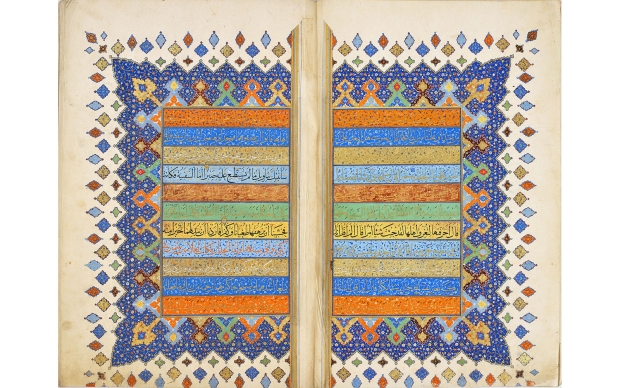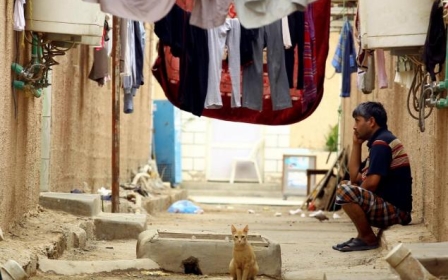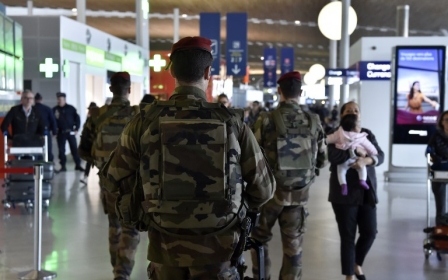Exhibit of rare Qurans seeks to restore Islam in US eyes

A first US showing of rare old Qurans opens on Saturday in a Washington DC museum, highlighting a different side of Islam at a time when the religion's image in America has been scarred by a divisive presidential campaign.
More than 60 Qurans and Quranic texts, dating from as far back as the late seventh century and considered works of art for their exceptionally fine calligraphy, will be featured in "The Art of the Quran," running through 20 February 2017, at the Freer and Sackler museums, home to the Smithsonian Institution's Asian art collection.
These majestic holy books were copied by hand for some of the richest and most powerful rulers of the Muslim world. Most of them - 47 of 63 - were lent to Freer and Sackler from a single source: the Museum of Turkish and Islamic Arts in Istanbul. The rest were already part of the Smithsonian collection.
The exhibition, contained in the intimate setting of a single room, tells the story of how the words and teachings of the Quran, traditionally passed on orally, came during the seventh century to be inscribed in fixed and permanent texts.
Letters of gold
The exhibit touches lightly on the messages of the Quran. "We are above all an art museum," the show's deputy curator Simon Retting told AFP during a news briefing on Thursday.
"So we come at it more from the angle of explaining how the Quran took the form of a book and how the arts of calligraphy and illumination" - the decoration and illustration of manuscripts - "developed around the book."
"We wanted to really show the variety of manuscripts," said Massumeh Farhad, the show's chief curator.
The Qurans on display, she noted, come from all parts of the Muslim world, from Iraq to Afghanistan and Turkey.
Thus, there is a Quran on parchment copied by a calligrapher in Iraq or Iran between the late eighth and early ninth century. Another imposing Quran, measuring some six feet by three feet (two meters by one meter) and dating from 1599 in the Iranian city of Shiraz, is done in colored ink with gold-encrusted letters.
"Today, when you look at a Quran, it always looks the same - it's a printed copy with a green color, one basic size," Farhad told AFP.
"What is remarkable here is the incredible variety of them, the size, the scale, the scripts... Especially when you think that the Quran is the same identical text copied over and over and over again. So you can't do something different. It's the same thing."
The show's opening comes just over two weeks before the US presidential elections of 8 November, amid a polarising campaign in which Republican candidate Donald Trump often stigmatized Muslims, saying at one point that he would ban all Muslims from entering the United States, at least for a time.
The exhibit, in the works for six years, was originally set to open in 2014 but was delayed by construction, museum officials said.
'Building bridges'
"Now, it is true that the exhibit is opening just at the moment of the elections, with highly charged public rhetoric around Islam," Retting acknowledged.
"But as our mission is to promote and spread understanding, it is opening at a very opportune moment to allow the American public to have a different image of Islam."
The show represents "a tremendous opportunity for dialogue between cultures" and an occasion to "build bridges," he added.
"Hundreds of thousands of people will come to this exhibition and learn about the Islamic world, its art, its culture," said Richard Kurin, under secretary for museums and research for the Smithsonian, which operates most of the museums in the US capital.
"At this time in our history in our country, it's so important that we do this, so that knowledge rather than ignorance shall prevail."
Tensions and misunderstandings about Islam have been growing in the US, Kurin continued.
"If we can help bridge that gap through this museum... we will have done our job."
New MEE newsletter: Jerusalem Dispatch
Sign up to get the latest insights and analysis on Israel-Palestine, alongside Turkey Unpacked and other MEE newsletters
Middle East Eye delivers independent and unrivalled coverage and analysis of the Middle East, North Africa and beyond. To learn more about republishing this content and the associated fees, please fill out this form. More about MEE can be found here.






